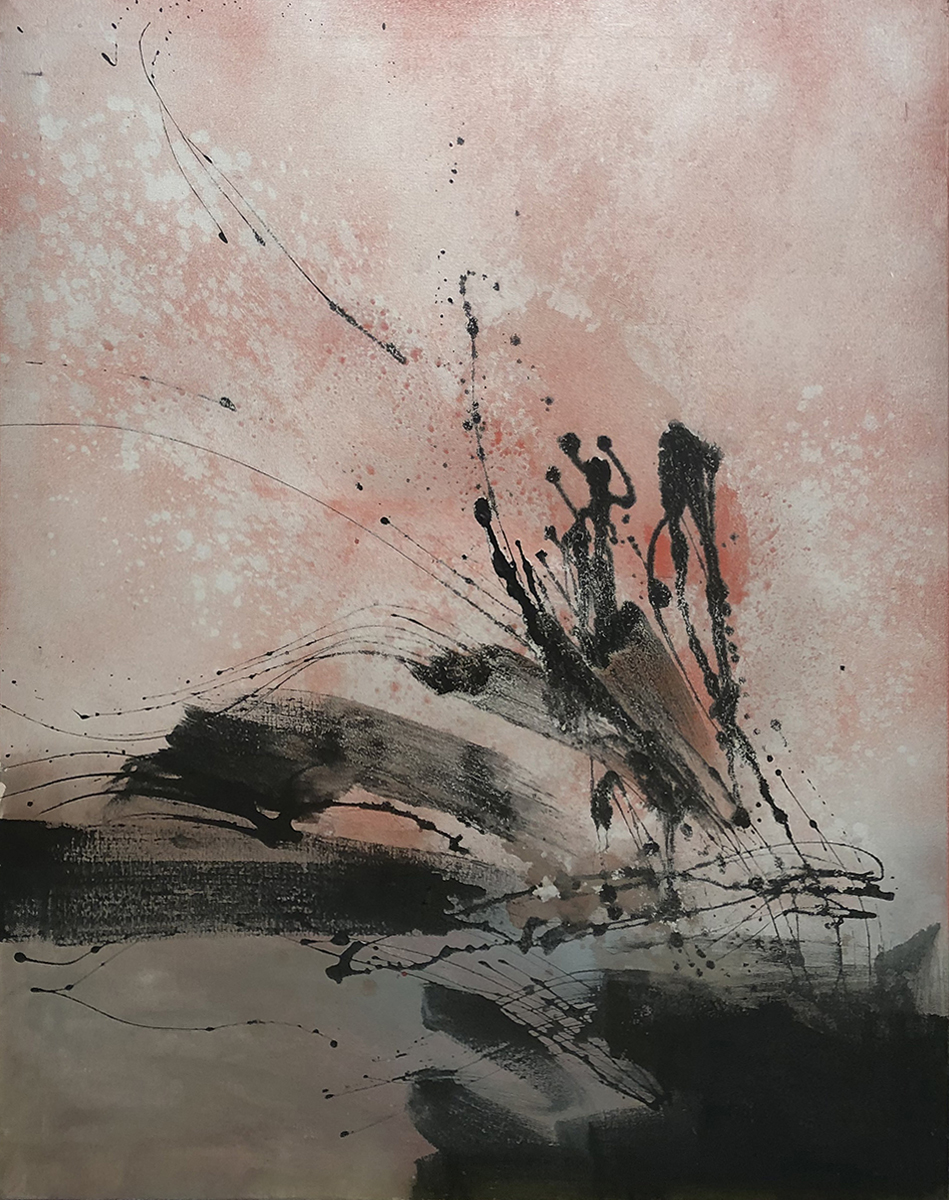






A Look at the Life of Denis Bowen(1921 - 2006) |
||
Marking what would have been Denis Bowen’s 100th birthday, Gallery Different takes a look at the formidable life of the artist, friend, and devoted patron. |
||
|
Whilst Denis Bowen’s extensive, and highly varied portfolio of works is evidence of his capabilities and energy as an artist; his ability to devote his time to championing other artists, particularly international, demonstrates his innovative personality. Denis Bowen, it seems, was ahead of his time – seeking the fervent beauty of abstract and international art, and in doing so, bringing it to the forefront of the post-war British art scene. Bowen’s life was turbulent from the onset; having been orphaned at a young age and thus being forced to emigrate from Kimberley (South Africa) to the UK where he and his three siblings were split up – his sisters going to live with family in Wales, and he and his brothers going to live with and be raised by his aunt in Huddersfield; there were consistent battles he had to face. The onset of World War II broke his enrolment at Huddersfield School of Art, and he enlisted in the Navy, serving on the Atlantic convoys throughout the war. He would later resume his studies at the Royal College of Art (London) from 1946. He and a number of his fellow students had experienced war, and their arrival as ‘mature’ students at RCA, came with an anti-establishment rhetoric that would challenge and contort the pre-existing institutional boundaries within the art scene. Denis Bowen would be at the forefront of these progressions, beginning with the implementation of Tachisme within his work. Despite the works projecting a sense of informality, the marks made on the canvas often carried a more significant emotional quality to them that bore resemblance to the European informal movement practised by artists including Roger Bissière, Alberto Burri, and Zao Wou-Ki. During the 1970’s, Bowen’s commitment to experimentation would see him move into the realm of psychedelia, an artistic creation that mirrored the work of notorious musicians including Jimi Hendrix. It was these works, which showed no limits, that transgressed the boundaries of fine art, paving way for the abstract art phenomenon that still resides today. |
|
|
With the continuing discoveries and fascinations of the space age, came Denis Bowen’s planetary landscapes which incorporated a plethora of materials that fantastically paid homage to the incomprehensibility of the space scape. Materials that came to include car paints and spray paints were symbolic of the unwavering beauty of the planetary landscapes, where the merging of the varied pigments would create unforeseen results upon the surface of each canvas. What these came to represent was magical, seeing a world in which human intervention had not occurred, and fantastical beauty had been allowed to resonate. This fascination with space continued to play a significant role within Denis Bowen’s work, which would establish him as an artist of a particular thematic approach. As noted by Peter Davies, ‘so evocative had Bowen’s brand of ‘abstract impressionism’ become by the 1990s that the random pools, sprays, runs or calligraphic dribbles of paint could reconstitute credible topographic imagery.’ Bowen’s unwavering loyalty to his artistic creation enabled him to become incorporated within many important international collections including Tate Britain. Whilst his artwork was significant in shaping the British post-war art trajectory at the time, his position as an artist, patron, and gallery director has often been neglected in the art historical narrative that we encounter today. The idea of non-figurative art after World War II, was shunned by the British art institutions and as such has become significantly under-represented even now. Bowen’s founding of the New Vision Centre Gallery (alongside Frank Avray-Wilson, and Halima Nalecz) gave a platform and voice to those generally ignored by the British art system, and paved the way for significant trends that may otherwise never have had the chance to flourish. Originating from 29 different countries, more than 220 artists became part of the New Vision Centre narrative, highlighting Denis Bowen’s absolute and pioneering embracement of internationality, devoid of the institutional racism that continues to manifest itself within the British art scene.
Denis Bowen - Celtic Cauldron (1991), oil on canvas - 137.5 x 109 cm |
 |
|
|
Working until the end, Denis Bowen was passionate about his role within the art scene and helping to promote other artists. He thrived off challenge, and maintained an intense interest in all that surrounded him in the realms of art, science and history. Dedicated to the core, he should continue to be remembered and spoken of with the same fervent energy that he so positively expressed throughout his own life. |
||